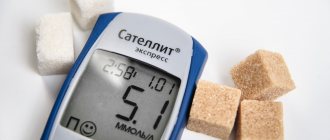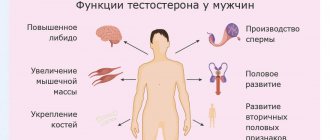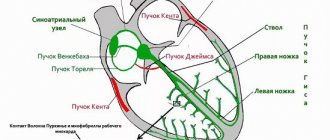Decoding the results is the competence of a pediatrician, therapist or specialist, since it is important not only to analyze the numbers, but also to compare deviations from the norms of different indicators, to compare the information obtained during examination and history taking. To have an overview and be prepared when you see your doctor, learn what blood elements are tested in the laboratory, how to interpret the results, and what abnormalities may mean.
Red blood cells
Erythrocytes, or red blood cells, ensure the delivery of oxygen to all cells of the body. In English-language literature, red blood cells are called “red blood cells,” which is where the international abbreviation RBC .
To transport oxygen, these cells contain hemoglobin, which can combine with it through chemical reactions. The analyzer displays the following indicators regarding these processes:
- RBC is the number of red blood cells per liter of blood. An increase in this indicator in humans can be observed with various neoplasms, hormonal disorders, but much more often it is the result of blood thickening due to dehydration, burns, taking diuretics and some other reasons. A decrease in RBC is observed with blood loss, anemia, disorders of their formation or increased destruction. A slight decrease in the number of red blood cells during pregnancy is normal.
- HGB - total hemoglobin content. The indicator grows following an increase in RBC and decreases for the same reasons. A decrease in HGB is also observed during hemodilution—blood dilution, for example, against the background of intensive intravenous administration of a large volume of solutions. Hemoglobin levels in women are usually lower than in men due to physiological blood loss during menstruation.
- HCT - hematocrit. This is a value that reflects the ratio of all blood cells to its liquid part - plasma. Since 99% of these cells are red blood cells, the indicator is used to estimate their volume.
Red blood cell indices
In addition, the so-called erythrocyte indices are assessed:
- MCV - average erythrocyte volume. Before the introduction of new analyzers, an accurate assessment was not carried out, and the result was designated as microcytosis, normocytosis or macrocytosis - depending on the size of the cells. An increased level of MCV may indicate a deficiency of vitamin B12, folic acid, hemolytic anemia, a decreased level may indicate iron deficiency and sideroblastic anemia.
- MCH is the concentration of hemoglobin in one red blood cell. In older analyzers, for this purpose, the color indicator was assessed, which is 0.03 of the MCH.
- MCHC is the average hemoglobin concentration in the erythrocyte mass, which reflects the degree of saturation of RBC with hemoglobin. It is the most stable indicator and can serve as an indicator of a correctly performed analysis.
All of the above indicators are closely related to each other and are assessed as a whole. For example, bleeding is accompanied by the loss of a large number of red blood cells. Accordingly, the total hemoglobin content also decreases, but MCH may remain normal. With a disease such as iron deficiency anemia, a slight deficiency of red blood cells occurs with a decrease in hemoglobin and various changes in erythrocyte indices. It makes no sense to list all possible changes in the body related to the content of red blood cells, and the doctor deciphers the result based on knowledge of those processes in the body in various diseases.
A separate indicator associated with red blood cells is their sedimentation rate - ESR (in modern analyzers - ESR) . This is a completely non-specific indicator, an increase in which indicates some problems in the body that the doctor needs to look for. In some cases, for example during pregnancy, an increase in ESR is physiological and is considered normal.
Eosinophils
Eosinophils are a small number of white blood cells that are found in human blood and tissues. They are an indispensable element that provides immunity.
Like other white blood cells, they are formed from bone marrow, and their progenitor is a single stem cell. The norm is 1–4%.
In total, eosinophils live about 12 days, but do not spend all of this time in the bloodstream. After 3-4 days of ripening, they enter the bloodstream and remain there for only 6-12 hours. Then they pass into the tissues and accumulate in especially large quantities in the lungs, under the mucous membrane of the digestive tract, and in the skin.
When the number of eosinophils increases, the condition is called eosinophilia, and the reverse change is called eosinopenia. As a rule, bright changes are symptoms of diseases, but some physiological fluctuations in their number are possible within normal limits. For example, an increase and decrease in eosinophils can be observed depending on the time of day; at night they are usually most in the blood.
Leukocytes
Leukocytes are a large group of diverse cells whose task is to provide protection to the body. In international medicine, they are often referred to as WBC - white blood cells. This abbreviation denotes the total content of leukocytes in the analyzer form. The reason for the increase in WBC is various damaging factors: infections, injuries, ischemia and tissue necrosis, and others. Simply put, an increase in the number of white blood cells means that the immune system is actively involved in the fight against damage. At the same time, low values of the indicator may indicate a lack of immunity under the influence of radiation, medications, certain viral infections, as well as diseases that are accompanied by impaired formation or increased destruction of leukocytes.
Leukocyte indices
In addition, in assessing the content of leukocytes, leukocyte indices , or in old forms - leukocyte formula . The general clinical analysis with the latter is called detailed. There are several types of leukocytes, which differ from each other in morphology and functional characteristics. The leukocyte formula reflects their percentage of the total number, and modern analyzers also display the absolute content of each type of these cells. They can be identified on the form by the following abbreviations:
- LYM - lymphocytes;
- MXD - agranulocytes (monocytes, basophils and eosinophils);
- NEUT—neutrophils;
- MON - monocytes;
- EO - eosinophils;
- BA - basophils.
If there is a “%” sign after the abbreviation, then we are talking about percentage, and the “#” sign means their absolute content. Changes in the leukocyte formula can serve as an indicator of a wide variety of problems in the body. Let's take a closer look at them.
The main task of neutrophils is phagocytosis - the absorption of foreign objects and their destruction. They always rush to areas of inflammation and tissue breakdown, where they perform this work, so their increased content indicates active inflammation.
In addition to neutrophils, the function of phagocytosis is performed by macrophages, into which, in the process of their development, monocytes . A high level of the latter also serves as a marker of inflammation, usually of an infectious nature.
Eosinophils take part in reactions associated with the allergic component. An increase in their number is observed in allergies, parasitic infestations, some infections and cancer.
Basophils take part in inflammation and allergies by releasing heparin, histamine and serotonin. They rarely increase in isolation, although such a phenomenon in some forms of leukemia has a serious prognostic significance.
Lymphocytes are actively involved in a wide variety of conditions, including immunodeficiencies, allergies, inflammation, and autoimmune disorders. Their high content may be a sign of childhood infections, viral hepatitis, mononucleosis, tuberculosis and a number of other diseases.
Assessment of leukocyte indices and leukocyte formula requires an understanding of the pathological and physiological processes in the body, and should not be carried out solely on the basis of tabular data. You absolutely cannot diagnose yourself based solely on the results of the analysis.
Monocytes
Monocytes are cells of the immune system that are among the first to respond to the penetration of aggressors into the body. If the forces of local immunity could not contain the attack of bacteria, fungi or viruses, then it is monocytes that are the first to rush to protect health.
Monocytes are formed in the red bone marrow and released into the blood. There they begin to actively function, but this does not last long, only 2-3 days. Then, using their ability to move, they move beyond the vessels through special small pores between the cells and penetrate into the tissue. There, monocytes slightly change their structure and turn into macrophages - more effective phagocytes.
Platelets
The main task of platelets is to participate in stopping bleeding. They form the primary plug in the area of vessel damage and participate in the formation of a blood clot. In forms, automatic analyzers are designated by the abbreviation PLT , which comes from the English word platelets (literally, “saucers”) for their peculiar shape.
A decrease in the number of platelets can be accompanied by bleeding and is a consequence of diseases and conditions such as malaria, thrombocytopenic purpura, malignant neoplasms, disseminated intravascular coagulation syndrome and some others.
A high platelet count can cause excessive blood clotting and often has no apparent cause. In this case, the condition is designated as essential thrombocythemia. In addition, thrombocytosis can be caused by iron deficiency anemia, hemolysis, some infectious and autoimmune diseases, and bone marrow damage.
This is where the work with platelets in a classic blood test ends; however, automatic analyzers even in this case offer additional diagnostic capabilities in the form of the following indicators:
- MPV —mean platelet volume. An indicator reflecting the size of cells, which directly depends on their age. An increased MPV may indicate hematological diseases, damage to the spleen, thyrotoxicosis, and progression of atherosclerosis. A decrease in the rate is observed in some genetic diseases, myocardial infarction, childhood infections, cancer chemotherapy and a number of other conditions.
- PCT is the ratio of the total volume of platelets to blood plasma (thrombocrit). It is not a specific indicator, it varies widely physiologically, but it allows one to assess the risk of bleeding and thrombosis.
- PDW —platelet distribution by volume. The indicator has no independent meaning and is assessed in conjunction with other indices.
Neutrophils
Neutrophils come from red bone marrow, they are formed from a single stem cell, which is the ancestor of all blood cells. However, stem cells do not immediately turn into neutrophils. Between these two forms there are several stages, several intermediate forms.
There are 6 types of neutrophils:
- myeloblasts;
- promyelocytes;
- myelocytes;
- metamyelocytes;
- band neutrophils;
- segmented neutrophils.
Most of all is in the blood of the latter. They are present in an amount of 40–75% of the total number of leukocytes. The number of rod-shaped neutrophils is significantly smaller, they can be 1–6%. The number of young cells does not reach 1%.
Table of normal blood test values
In conclusion, we provide a table of the main normal indicators of a general blood test in adults and children. We remind you that its results can only be assessed in conjunction with examination data, other laboratory data, including biochemical blood tests and instrumental diagnostic methods. In addition, reference, that is, acceptable, values depend on the type and model of diagnostic equipment. In this case, in the form of the automatic analyzer, next to the result obtained, normal values for a specific model are reflected.
| Index | Adults | Children | ||||||
| Men | Women | up to a year | 1-2 years | 2-4 years | 4-6 years | 6-10 years | 10-16 years | |
| RBC, *10^12/l | 4,3-5,7 | 3,8-5,1 | 4,1-5,3 | 3,8-4,8 | 3,7-4,9 | 3,8-4,9 | 3,8-5,2 | |
| HGB, g/l | 132-173 | 117-155 | 113-141 | 110-140 | 115-145 | 115-160 | ||
| HCT, % | 39-49 | 35-45 | 33-41 | 32-40 | 32-42 | 33-41 | 35-45 | |
| MCV, fl | 80-99 | 81-100 | 71-112 | 73-85 | 75-87 | 75-90 | ||
| MCH, pg | 27-31 | 31-37 | 24-33 | 26-32 | ||||
| ESR, mm/h | 2-15 | 2-20 | ||||||
| WBC, *10^9/l | 4-10 | 6-17 | 5,5-15,5 | 5,5 -15,5 | 4,5-13,5 | 4,5-13 | ||
| LYM#, 10^9/k | 1-4,8 | 2-11 | 3-9,5 | 3-9,5 | 1,5-7 | 1,5-6,5 | 1,2-5,2 | |
| NEUT#, *10^9/l | 1,8-7,7 | 1,5-8 | 1,8-8 | |||||
| MON#, *10^9/l | 0,05-0,8 | 0,05-1,1 | 0,05-0,6 | 0,05-0,5 | 0,05-0,4 | |||
| BA#, *10^9/l | 0-0,08 | |||||||
| EO#, *10^9/l | 0,02-0,5 | 0,05-0,4 | 0,02-0,3 | 0,02-0,5 | ||||
| PLT, *10^9/l | 180-320 | 160-390 | 150-400 | 180-450 | 150-450 | |||
| MPV, fL | 9,4 -12,4 | |||||||
| PCT,% | 0,108-0,282 | |||||||
Patient preparation rules
venous blood
Standard preparation conditions (unless otherwise determined by the doctor):
8 hours before, withstand fasting, exclude fatty foods.
You can drink water. capillary blood Standard preparation conditions (unless otherwise determined by the doctor):
8 hours before, withstand fasting, exclude fatty foods. You can drink water.
You can add this study to your cart on this page
Deviation from the norm is not always a disease
If the level of red blood cells during the first analysis is slightly outside the normal range, do not panic.
Your doctor will help you interpret the results correctly, taking into account your individual characteristics and medical history. A single slightly elevated or slightly decreased result may have no medical significance. There are several factors that can cause a test result to fall outside the established reference range without pathological reasons:
- Under the influence of external factors (stress, previous infections, physical activity), the results of the analysis of the same person may differ slightly. In this case, a person can be healthy. If the analysis shows a slight deviation, retake the test on another day.
- Individual characteristics. For some people, the boundaries of the norm may differ slightly from generally accepted ones. Reference values are valid for the vast majority of people, but we are all different, and in some rare cases, a healthy person may have their own norms, slightly different from the usual values.
Only a doctor can accurately determine this after conducting additional research.
MCV reduced
A decrease in the average volume of red blood cells most often occurs with the development of iron deficiency anemia. They can develop as a result of exposure to various factors, such as:
- Chronic blood loss.
- Lack of iron in the diet.
- Impaired absorption of iron in the intestines.
A decrease in the volume of red blood cells is observed in a variety of chronic diseases - long-term infections, oncological pathologies. Rarely, a congenital decrease in mcv is possible, for example, with thalassemia. This is a group of genetic pathologies that occur when the synthesis of hemoglobin globin chains is disrupted.
If the synthesis of the alpha chain is impaired, alpha thalassemia develops. This is a relatively mild pathology, characterized by a decrease in hemoglobin to 70-90 g/l and a decrease in the mcv index. This form of the disease often does not manifest itself in any way and is detected by chance, when studying laboratory blood parameters.
Beta thalassemia, which occurs when the synthesis of the hemoglobin beta chain is impaired, is much more severe. If defective genes were inherited from one of the parents, it is manifested by a decrease in the mcv index and hemoglobin level. When defective genes are passed on from both parents, Cooley's anemia develops. It is characterized by an extremely severe course; red blood cells not only sharply decrease in volume, but are also quickly destroyed. This leads to enlargement of the liver and spleen and disruption of their functions. To maintain life, such patients require regular blood transfusions, and a complete cure is possible with a bone marrow transplant.








